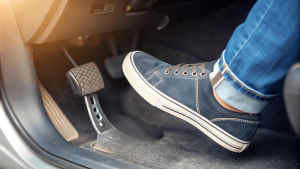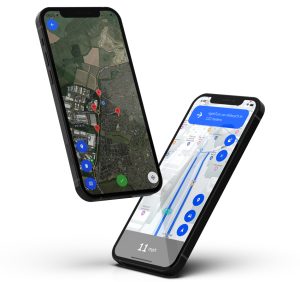Clutch Control
Clutch control is a fundamental driving skill that most people find to be a real challenge to get to grips with when they first start learning to drive a manual car. Some learner drivers seem to get the hang of it right away, while others need more time and practice. Learning how to keep the car from stalling every time they’re slowing their car down to a stop or pulling off from a standstill can be a really infuriating experience.
Mastering clutch control in all road scenarios before it becomes second nature make take a while. Most people get there in the end. Understanding how the clutch actually works (and what happens when you press the clutch pedal all the way to the floor or when you let it come back up) makes it easier to comprehend the complexities of the whole process. With lots of practice, clutch control will eventually become a natural function, just like other fundamental driving procedures.
This article explains the basics of clutch control and how the clutch needs to be used in various situations
How the clutch works
If you want to smoothly drive a car with a manual gearbox, it is essential to have good clutch control. In order to develop the skill of operating the clutch pedal smoothly, you need to understand what the clutch is, how it works and how to use it correctly when driving.
Very simply speaking, the clutch is the device that connects and disconnects your car’s engine to the gearbox (and, thus, to the wheels). It’s made up of two friction plates: one is connected to the engine and rotates all the time the engine is running, the other is linked to the gearbox and rotates only when it’s held against the first plate by springs.
When you press the clutch pedal all the way to the floor, you move the plates apart, breaking the connection between the engine and the gearbox. As your car’s engine is constantly spinning, power is constantly being transferred from the engine to the wheels when the car is in gear. Disengaging the engine from the gearbox prevents that from happening. This will allow you to change gears or stop the car. When you lift the clutch very slowly until you reach the biting point (the point where the two clutch plates begin to make contact), it reconnects the engine to the gearbox, which provides a little drive to the wheels, then you lift the clutch pedal fully to send all of the power from the engine to the wheels.
If you forget to press the clutch down when coming to a stop, your car will stall.
Pulling away from the flat
First, press the clutch pedal down and select 1st gear, then gently press the accelerator pedal to raise the engine revs just above idle. These extra revs are important as they will provide extra power to help avoid stalling. Next, lift the clutch pedal up a little until you feel the clutch start to bite. You need to find just the right amount of clutch bite point; too little and the car won’t move, too much and it will judder or stall.
Try listening for the engine note deepening or look for the nose of the car rising a little as it strains against the handbrake, then release the handbrake and keep both feet still as the car starts to roll forward. This will allow the clutch biting point to gently get the car rolling smoothly. Lift the clutch up fully once the car is at about walking pace and continue driving. Be patient and wait until walking pace before lifting the clutch pedal fully. If you try to lift it up too early or in one go, the clutch will bite too quickly, which will probably stall the engine.
Hill Start
It’s the same drill as for pulling away on the flat, but with a little more revs to provide extra power to get the car moving uphill. To avoid your car rolling backwards, you must use accelerator, clutch and handbrake together.
- with your left foot, press the clutch pedal all the way down
- put the car into 1st gear
- with your right foot, apply pressure on the accelerator pedal, a little bit more than you would when starting on the level (enough to help the car get uphill) and hold it perfectly steady
- slowly bring the clutch up to the biting point (it will be slightly higher than when you’re pulling away on the flat)
- make sure you check your mirrors, check your blind spots, signal if necessary and when it’s safe, gently release the handbrake
- gradually press the accelerator pedal as you pull away, keep your feet still for at least two to three seconds of moving off and once you build up momentum, let the clutch come up slowly
Stop-Start
Another time you will need good clutch control is when you are driving in stop-start traffic. At first, you just use 1st gear and the clutch biting point to edge forward slowly. The useful clutch technique in traffic is to let the car roll along slowly with the engine idling, so once you change into 2nd gear, you let the car roll along without pressing any pedals, although you should keep our feet ready to react in case you need to stop quickly. When you need to reduce speed, just push the clutch pedal down to reduce the drive to the wheels and use the brakes as needed.
Reverse Parking
When manoeuvring, it’s important to keep the car speed very slow, around 1 mph. If you lift the clutch pedal just enough that the clutch is starting to bite, it will give enough drive to move the car slowly. From there, you can change the car’s speed by adjusting the amount of clutch bite, lifting the pedal a little more to increase drive or pushing the pedal down a little to reduce drive or stop the car.
Learning Driving Test Routes
You are much more likely to pass your driving test first time if you already know your local Driving Test Routes.
Other Helpful Resources: Driving Test Centre Pass Rates and Change Your Driving Test
Good luck with your test!


